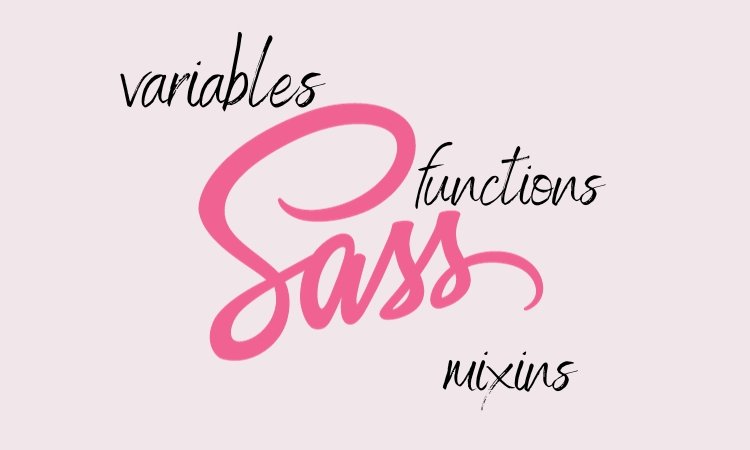Sass, the preprocessor scripting language for CSS, introduces a host of features that significantly enhance the way stylesheets are written and maintained.
In this tutorial, we’ll explore three powerful Sass features: variables, mixins, and functions. Understanding how to leverage these elements can elevate your styling capabilities and streamline your web development workflow.
Contents
1. Defining Variables in Sass:
What are Variables?
Variables in Sass act as placeholders for values, making it easy to reuse and update those values throughout your stylesheet.
How to Define Variables:
// Example: Defining a primary color variable
$primary-color: #3498db;
// Using the variable in styles
body {
background-color: $primary-color;
}
.header {
color: $primary-color;
}
Benefits of Using Variables:
- Improved readability and maintainability.
- Consistent updates across your stylesheet by modifying a single variable.
2. Creating Mixins in Sass:
What are Mixins?
Mixins in Sass are reusable blocks of styles that can be included in other selectors, promoting code modularity and reusability.
How to Define Mixins:
// Example: Creating a border-radius mixin
@mixin rounded-corners($radius) {
border-radius: $radius;
}
// Using the mixin in styles
.box {
@include rounded-corners(10px);
}
Advantages of Mixins:
- Reduces redundancy by encapsulating styles into reusable components.
- Enhances maintainability and scalability of your stylesheets.
3. Implementing Functions in Sass:
What are Functions?
Functions in Sass allow you to perform calculations and manipulate values dynamically.
How to Define Functions:
// Example: Creating a function to calculate percentage
@function calculate-percentage($value, $total) {
@return ($value / $total) * 100%;
}
// Using the function in styles
.container {
width: calculate-percentage(800px, 1200px);
}
Benefits of Using Functions:
- Enables dynamic computations, enhancing flexibility in styles.
- Promotes cleaner and more concise code.
Defining in separate files
Defining variables, mixins, and functions in separate files and then importing them into your main Sass file is a great way to organize your code and enhance maintainability. Here’s a step-by-step guide on how to achieve this:
Step 1: Create Separate Files
Create individual Sass files for variables, mixins, and functions. For example:
_variables.scss:
// _variables.scss $primary-color: #3498db; $secondary-color: #2ecc71;
_mixins.scss:
// _mixins.scss
@mixin rounded-corners($radius) {
border-radius: $radius;
}
_functions.scss:
// _functions.scss
@function calculate-percentage($value, $total) {
@return ($value / $total) * 100%;
}
Step 2: Main Sass File
Create your main Sass file (e.g., main.scss) and import the separate files:
// main.scss
@import 'variables';
@import 'mixins';
@import 'functions';
body {
background-color: $primary-color;
}
.button {
@include rounded-corners(8px);
width: calculate-percentage(200px, 400px);
}
Step 3: Import Order
Ensure that you import the files in the correct order, as variables, mixins, and functions may depend on each other. Importing them in the main file provides a consolidated view of your styles.
Step 4: Compilation
When you compile your main.scss file, the Sass compiler will combine all the imported files into a single CSS file.
Step 5: Compilation Command
Assuming you have Sass installed, you can use the following command to compile your Sass files:
sass main.scss output.css
This command takes your main.scss file, processes the imports, and generates a single CSS file named output.css.
By organizing your code in this way, you promote code reusability and maintainability, making it easier to manage and update your styles as your project evolves.
What is preprocessor?
A preprocessor is a tool or program that processes input data or source code before it is fed into a compiler. In the context of web development, a preprocessor for stylesheets, such as Sass (Syntactically Awesome Stylesheets) or Less, is commonly used.
These stylesheet preprocessors introduce additional features and functionality to the standard CSS (Cascading Style Sheets) language. The primary purpose of a preprocessor is to enhance the efficiency and maintainability of stylesheets by providing advanced capabilities that go beyond what traditional CSS allows.
Some common features offered by stylesheet preprocessors include:
- Variables: Allowing the definition of reusable values to maintain consistency across stylesheets.
- Mixins: Enabling the creation of reusable blocks of styles that can be included in multiple selectors.
- Functions: Facilitating dynamic calculations and manipulation of values within stylesheets.
- Nested Syntax: Improving the organization of styles through a nested structure, making the code more readable.
- Imports: Allowing the modularization of styles by importing stylesheets into one another.
Conclusion
Mastering variables, mixins, and functions in Sass empowers developers and designers to create more efficient, maintainable, and dynamic stylesheets.
By incorporating these features into your workflow, you’ll not only enhance the readability of your code but also expedite the development process and adapt to changing design requirements seamlessly. Start implementing these Sass techniques today and experience the transformation in your web development projects.





Thank you for your sharing.Thank you.